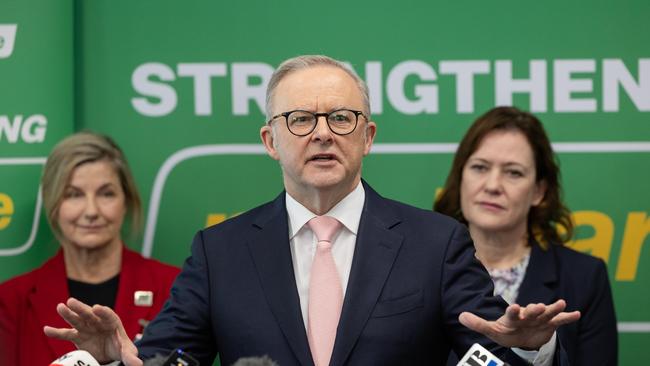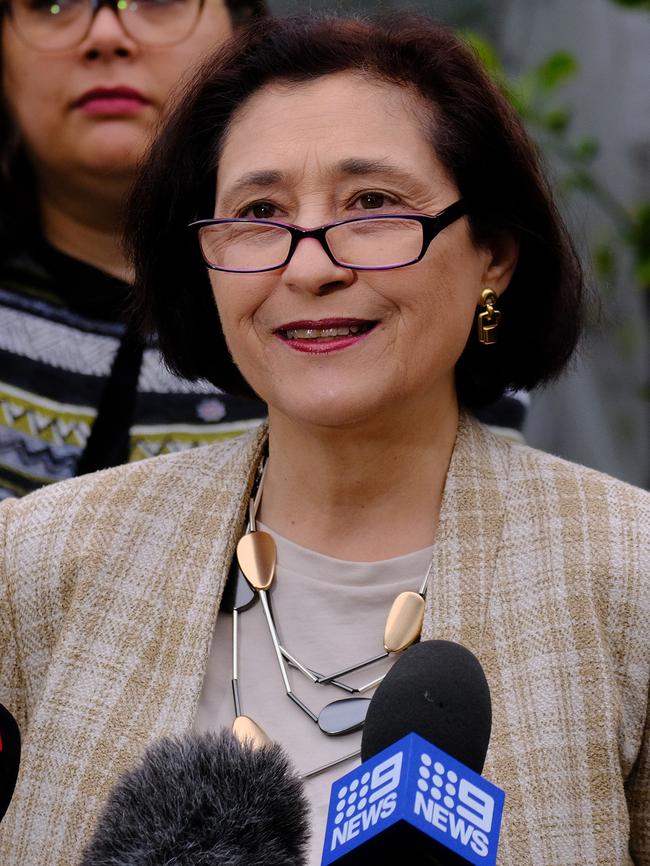
I’m not a big fan of economic modelling. It does have a role, and I have a grudging admiration for modellers and their technical skills.
When it comes to posing “what if?” questions, it can be useful because it places some numerical estimates on the likely impact of certain changes, including the standard errors attached to the estimates. As for predicting what will happen, however, economic modelling is basically a bust.
The faith Anthony Albanese placed in economic modelling was always surprising given his university major in political economy, a left-wing subject not known for its emphasis on empirical estimation.
He claimed the modelling done by RepuTex on future power prices was “the most comprehensive modelling ever done for any policy by any opposition in Australia’s history since Federation”. According to this modelling, average electricity prices would fall by $275 for households by 2025 from their 2022 level.
When asked how he could be certain, he simply declared: “I don’t think, I know.” This was because of Labor’s “suite of policies”.

So fast-forward to today, and the Prime Minister is backing away from the modelling as fast as he can. He can try to blame the Ukraine war or global events more generally – these factors have now largely washed through the system – but he was always extremely ill-advised to rely on the modelling in the way he did.
In fact, the modelling was far from comprehensive. A reasonable stab at predicting wholesale electricity prices was made, although the underlying assumptions didn’t come to pass. But retail electricity prices comprise wholesale prices, transmission and distribution costs, and retail costs. It’s a complicated equation, with transmission and distribution costs the largest component. When it comes to wholesale prices, it’s the marginal supplier that sets the price. During the day, when there’s a great deal of solar and often wind power, the price can easily be very low or even negative.
But when the sun sets and the wind dies down, it will be the dispatchable generators that will determine the price – coal or gas, in the main. As the coal-fired power stations begin to reach the end of their lives, gas will increasingly become the price setter in the electricity market.
While the Labor government realises this in theory, the Coalition has a more concrete plan to bring more gas into the system, which should ease some of the price pressures. But before I consider the Coalition’s gas plans, let me deal with the increasing cost of the transmission and distribution system, which will begin to contribute to higher electricity prices very soon.
One of the main disadvantages of dispersed renewable energy is that it requires a massive expansion in the transmission system to link far-flung installations to the grid. Some of these new transmission lines may only be used lightly – say, a quarter of the time – but their full cost will be passed on to consumers if the energy regulator deems them “regulated assets”.
Energy Minister Chris Bowen has declared we need an additional 10,000km of transmission lines. There is also a figure of 28,000km floating around to meet net zero by 2050.

But it doesn’t end there. There are several additional costs associated with renewable energy. As coal leaves the system, the grid needs to find alternative ways of stabilisation without the constantly spinning turbines.
Large-scale batteries can help – for a price. There is also a proposal around for large-scale spinning condensers to be installed – again, for a price. The point is, what used to be provided incidentally and for free by the coal-fired power station is now an additional component of electricity prices.
Each week we learn about regional communities and land holders objecting to the construction of massive transmission lines and renewable energy installations. The way economists think about these legitimate objections is that external costs are being imposed on some citizens without adequate recognition or compensation.
Simply viewing the environmental degradation being visited on the Kosciuszko National Park surely makes most reasonable people wonder whether the whole renewable energy project has gone too far. Can you imagine that sort of damage being acceptable for a nearby mining development?
As for offshore wind developments, the most likely outcome is that most of the projects will never proceed. The reality is hitting home that the economics of offshore wind simply do not stack up. The initial construction costs are far too high, and the maintenance costs are astronomical. The concerns of the affected seaside communities cannot be fully addressed.
This is a significant concern in Victoria, where the plans of its hapless Energy Minister, Lily D’Ambrosio, are highly dependent on major offshore wind developments occurring within a relatively brief period of time. Her department’s modelling – there’s that term again – shows without offshore wind, more than 70 per cent of the state’s landmass would need to be covered with wind and solar installations (with most of that land held privately) to meet her renewable energy targets.
Now, what to make of the Coalition’s plans to insist on some domestic reservation for east coast gas as a means of bringing down the domestic supply of gas?
The requirement will only apply to spot gas, not to gas subject to long-term contractual arrangements. On the face of it, this is a good outcome: forcing suppliers to break contracts would be bad for a country’s reputation.

Second, there is likely to be a concerted effort for new gas supplies to be developed – think Bowen, Surat, Beetaloo, Narrabri, even Gippsland – and this should ease gas shortages as well as the pressure on prices. It’s perfectly reasonable for new investments to be subject to reservation arrangements. The Coalition also anticipates committing about $1bn to support gas-related infrastructure such as pipelines and storage facilities.
It won’t be possible to accurately model this policy stance, particularly because timing will be uncertain. But the point is it puts some meat on the bones of the proposition that gas must playing a leading role in the electricity grid going forward.
Labor is more talk rather than action, reflecting the ongoing pressure it feels from anti-gas environmental groups.
The reality is, if we were only interested in affordable and reliable electricity, we would have stuck with coal and replaced the ageing plants with high-efficiency, low-emissions plants that are now commonplace in certain parts of the world, including China. This would have avoided the massively expensive expansion of the transmission and distribution systems.
But once emissions reduction was added to the list of criteria, the game changed. In fact, the energy market operator puts the need to reduce emissions as the primary requirement, with affordability and reliability secondary considerations. This is one of the reasons for the mess we are facing.
It is simply not fiscally sustainable to keep giving every household $300 a year to reduce their electricity bills.
Gas will partly rescue us, but we may simply need to get used to higher electricity bills and the deindustrialisation associated with high energy costs.






